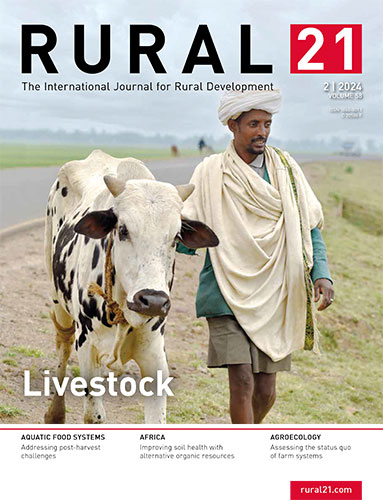- Share this article
- Subscribe to our newsletter
GLF Peatlands 2024: The climate solution we forgot
Despite covering only 3-4 per cent of the Earth’s land surface, peatlands are the most efficient terrestrial carbon sink, storing up to 600 million tons of carbon in their soils – double the amount stored by all the world’s forests combined. This remarkable capacity for carbon sequestration highlights their crucial role in mitigating climate change. However, when peatlands are drained or degraded, they release vast amounts of carbon emissions, contributing significantly to global warming.
The experts at the conference warned that peatlands were disappearing three times faster than forests due to various human activities such as agriculture, forestry and peat extraction. This rapid loss not only threatens carbon sequestration efforts but also jeopardises the myriad of ecosystem services they provide such as flood and wildfire prevention, water filtration and biodiversity support. However, these ecosystems are of cultural and economic importance as well, especially for the indigenous communities that traditionally farm these areas sustainably. “Indigenous traditional land management practices and techniques should be recognised and acknowledged legally. We should promote and implement mutual and equal partnerships and collaborations, at both national and international levels, where indigenous communities are not just merely considered beneficiaries but the main actors,” emphasised Emmanuela Shinta, Director of the Ranu Welum Foundation and Coordinator of the GLFx Kalimantan Chapter, in her presentation.
Protecting the remaining peatlands is a more straightforward and effective strategy compared to restoration efforts. Jochen Flasbarth, State Secretary at the Federal Ministry for Economic Cooperation and Development (BMZ), highlighted several lessons learned from both national and global experiences. “First, protection is better and usually easier than restoration,” Flasbarth noted. “We need to act fast to protect the remaining peatlands both in Europe and world-wide. To reflect the true value of peatlands, they also need to play a stronger role in nationally determined contributions. Second, conservation and restoration will not work unless we include local communities and Indigenous Peoples. Third, public funds are an indispensable part of the solution. But we also need to find ways to engage the private sector in the sustainable use of peatlands.”
The role of science and financing
Scientific research is pivotal in providing the evidence base for effective policy-making and implementation of peatland conservation strategies. However, there are still gaps in the definition and identification of peatlands, as well as in the mapping or exact condition of certain areas. For example, in Latin America and the Caribbean, reliable soil data and mapping was insufficient, making it difficult to estimate the extent of peatlands, said Kristell Hergoualc’h, a senior scientist in ecosystem functions at CIFOR-ICRAF. According to the experts, there was therefore a need for multisectoral and interinstitutional cooperation on a global level. The significant gap in financing for peatland restoration and management is another point that needs to be considered. Sonya Dewi, Director of Asia at CIFOR-ICRAF, pointed out that “the role of science is to provide an evidence base for policy-making so that the real benefits in terms of climate mitigation and livelihoods can be measured, planned and implemented well. The big gap is financing. Innovative financing would be a huge benefit to enable restoration and management for the benefit of climate and for the benefit of local communities.” Peatlands are a critical yet underappreciated component of the global ecosystem. Their unrivalled ability to store carbon, combined with the wide range of ecosystem services they provide, make their protection and restoration an urgent priority. Experts at the conference therefore made a strong appeal for global efforts around peatlands to be combined to protect and restore their true potential.
Author: Patricia Summa, Rural 21





Add a comment
Be the First to Comment